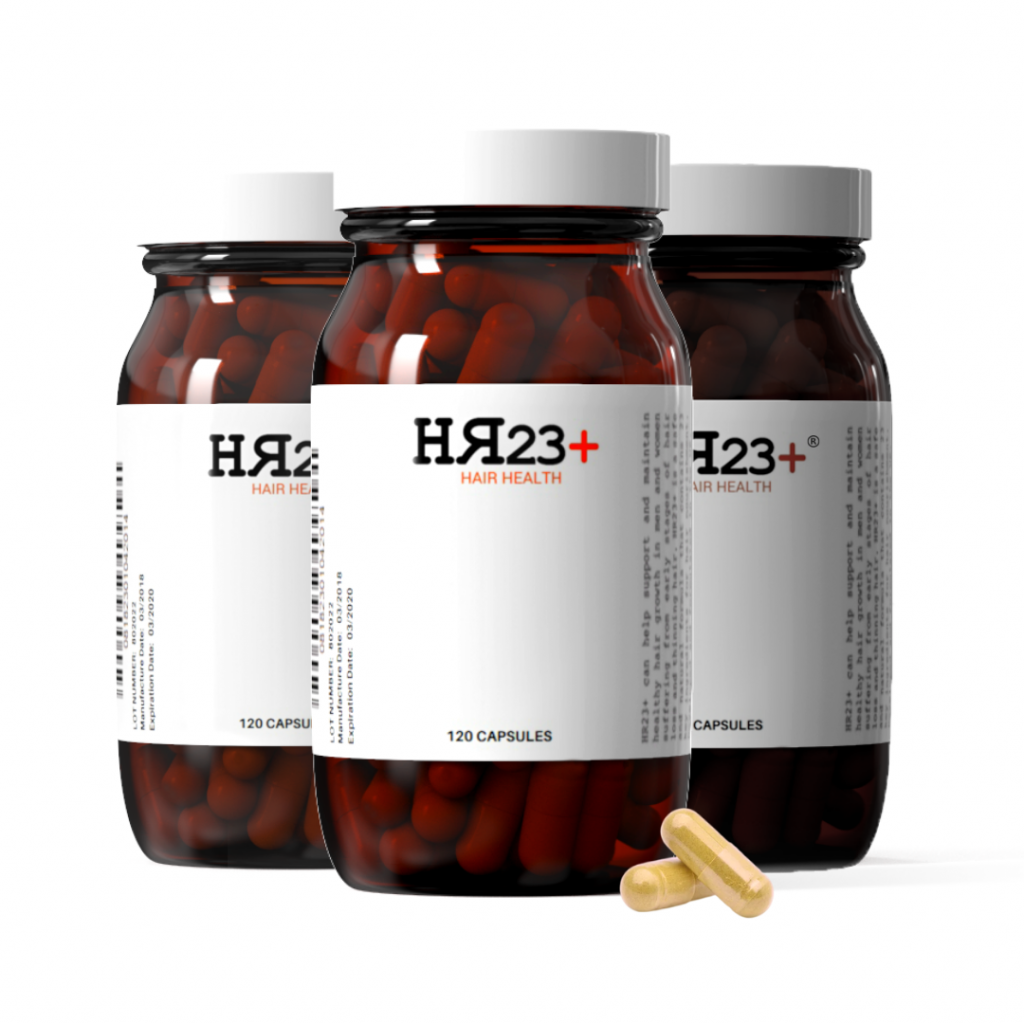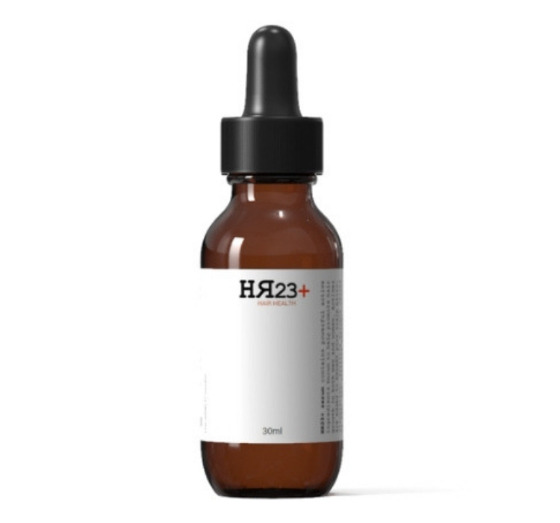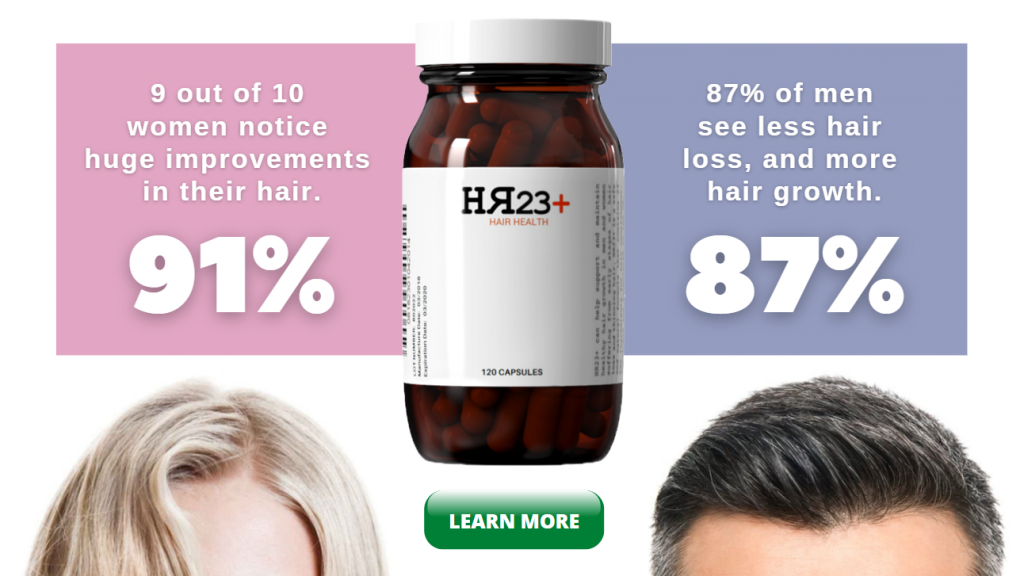
How can post pregnancy hair loss be prevented?
A high number of new mums experience excessive hair shedding after pregnancy. The hair fall usually peaks at around 3-4 months after giving birth. Within 12 months of giving birth, some women regain their normal hair growth, but for many, the effects of postpartum hair loss can be long term.
If your hair does not regain its normal fullness after one year, you may want to see a dermatologist. If you have already done so, then it could be worth trying a few things at home, along with some recommend treatments and products that can help stop the hair fall, and promote hair growth.
Can postpartum hair loss be minimised?
Tackling hair loss is not an easy task, but the good thing about postpartum hair loss is that, in most cases, it is a temporary type of shedding. That means, more likely than not, most of the lost hair during post pregnancy will grow back within a year.
However, this is not always the case, as there are still many women who experience thinning on a longer term basis. If excess shedding should occur after 12 months of giving birth, then it is worth seeking treatments. Maintaining healthy hair can be achieved by tackling postpartum hair loss early and efficiently, with the right treatment plan.
Ways to minimise postpartum hair loss
Don’t forget, it’s perfectly normal for your hair to thin out after pregnancy. This happens to the vast majority of women, especially after the age of 30. If it’s worrying you, then you should look at ways to treat it. Unfortunately, there is no cure for any type of hair loss in both men or women, but, there are ways it can be minimised.
If the rapid thinning of your hair is bothering you, then you can look into some simple ways that will help make your hair appear fuller and healthier. It might also help prevent further thinning and fall.
Hair styling
Minimise potential damage and breakage to your strands by avoiding heat devices like hairdryers and hair straighteners. If you cannot go without them, then at least lower the heat level. Heat devices don’t cause hair loss, but they can cause havoc on hair that is already prone to thinning and falling out.
Also, try to stay clear of chemical based styling products and hair sprays. These types of products contain harsh additives which can damage the strands, and cause unnecessary breakage. Opt for natural and organic products, where possible, as they will be more gentle on your hair, thus causing less damage.
Eat healthy
You are what you eat, and your hair is absolutely no exception to the rule. Eating low fat, healthy foods can only be a good thing for your hair to thrive. Stay away from sugary sweet treats and junk food, and instead opt for fish, nuts, avocado, green vegetables, sweet potatoes, lentils, eggs, and fruits.
A good, well-balanced diet will help minimise hair fall, and strengthen the strands from the roots. The better you eat, the more your hair will flourish.
Scalp Massaging
As we’ve mentioned before, more research is needed to back up the theory that scalp massaging can stimulate hair growth. However, that’s not to say it can’t. Massaging the scalp for five to ten minutes, three times a week, can reduce hair loss by dilating the blood vessels underneath your scalp. It can also encourage blood flow in your head, delivering more nutrients and removing waste products from your hair follicles. With better blood circulation, your hair follicles are more likely to stay strong, which means you’ll have better overall hair growth.
Use your fingertips, or a scalp massaging tool, like a shower brush, for example, to massage your scalp in circular motions. If you’re consistent, there’s no reason why this shouldn’t help stimulate hair growth.
Treatments and products for postpartum hair loss
As we’ve already stated, there is no cure for hair loss, but there are some treatments on the market that can help minimise hair loss, and even promote the function of healthy hair growth.
As safe alternatives to the medical drug, minoxidil – which can come with negative side-effects – we’ve assembled a few treatments that are both and effective for tackling hair loss.
Here are some treatments that can help minimise (and even stop) excess shedding, and promote normal hair growth as well as some hair regrowth. This treatments can be effective for many types of hair loss, including post pregnancy thinning.
Multivitamins
Worry less about hair loss with a potent supplement that delivers visible improvements in the hair in 9 out of 10 of its female users. HR23+ hair restoration supplement is the leading multivitamin hair supplement, designed to help prevent excess hair shedding and support the function of healthy hair growth in patients suffering from early stages of baldness and thinning hair.

HR23+ contains key vitamins that are primarily responsible for the development of hair cell growth, as well as the skin cells and nails. This supplement contains key additives which help generate hair growth by providing more nutrients to the hair follicles.
The combination of anti androgens and hair growth promotes, helps stump hair fall while promoting the function of normal hair growth. HR23+ was designed for optimal results. It is safe, free from major negative side-effects, and does not contain any chemicals or drugs.
Keratinocyte Growth Factor (KGF)
Keratinocyte Growth Factor (KGF) has been shown to help stimulate hair follicles, for thicker, stronger, and healthier hair growth. KGF is an active ingredient that can help promote the function of healthy hair growth by utilising the nutrients that contain prebiotics, polysaccharides and antioxidants to protect the cells that make hair.

Most commonly used in a serum, KGF is an important endogenous mediator of hair follicle growth, development, and differentiation. HR23+ Scalp Therapy Serum contains active ingredients to help with poor scalp micro-circulation and follicle atrophy caused by dihydrotestosterone, seasonal shedding, post-partum baldness, menopausal hair loss, and follicle ageing.
As a precaution, use the serum after the breastfeeding stage.
Ketoconazole
If you’re looking for a shampoo that can potentially stop hair loss, and aid in hair regrowth, then Ketoconazole could be something to consider.
Most commonly branded as Nizoral shampoo, ketoconazole is one of the most common treatments for a thinning or receding hairline, for both men and women. Nizoral is a shampoo designed to fight dandruff, hair loss, and other adverse scalp conditions, but the active ingredient, ketoconazole, can help promote strong hair growth.

Ketoconazole’s effects on women who are pregnant or breastfeeding aren’t well-studied, so as a precaution, this shampoo should be avoided if you’re pregnant and have concerns about using an antifungal treatment.
This shampoo only needs to be used once a week, and can benefit the hair when used in conjunction with multivitamins and Keratinocyte Growth Factor (KGF) serum.
Conclusion
There are a variety of different treatments on the market that can offer you safe and effective solutions for postpartum hair loss. Combing certain treatments can help minimise hair fall, and strengthen hair growth, to a certain extent.
By taking control of the situation, and treating the issue at hand, you’ll be in a better position to prevent unnecessary hair loss, and enjoy healthier hair growth.
The recommended treatments above generally considered to be safe, and free from negative side-effects. However, it is always a good idea to read up on the products before using them. Your health will always be more important than your hair.


How To Prevent Female Hair Loss – Female Hair Loss Advice
[…] women tend to suffer from hair loss during hormonal stages in life. Postpartum hair loss is particularly common, and so too is menopausal hair loss. Many women tend to shed considerably […]